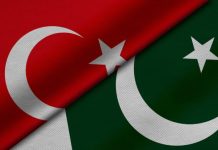BEIJING: As the novel coronavirus situation in the U.S. worsens, President Donald Trump’s March 16 tweet calling the virus “Chinese virus” inflamed an already rampant xenophobic sentiment in the country. The racist tweet put the large Asian community in a dangerous position, and experts warned that racism could hamper the global efforts to curb the spread of the disease.
“During the swine flu epidemic of 2009 in California, a lot more people died, but there was no demonization of Californians or Americans,” Joan Kaufman, former associate professor of health policy and management at Columbia University’s Mailman School of Public Health, said.
Wan Yang, an epidemiologist at Columbia University, warned that racism will discourage people with early-stage mild symptoms to seek testing and treatment. “We want people to feel comfortable to talk to their doctors when they do have symptoms, so we can get cases isolated, treated and stop the transmission as early as possible,” Yang said.
The Trump administration is increasingly criticized for taking few stringent actions to contain the spread of the coronavirus except for the racist and fallacious blame. A growing number of politicians and epidemiologists are calling for action from the federal government to centralize resources and maximize the physical capacity to battle against the coronavirus. ZhuoxuanTian, a Chinese student, has witnessed the coronavirus containment measures both in China and the U.S. She visited her family in Beijing during the Chinese New Year in January and then returned to New York to continue her study. She said ordinary American people “don’t have adequate knowledge” about the seriousness of the virus and “the harm it can cause” as a result of “the government’s sluggish guidance in terms of the nature of this virus.”
Yuting, a Chinese national who works in Chicago and declined to give her last name, booked her flight back to China as soon as her manager approved her leave of absence. “I travel by plane every week for my work and am exposed to a large number of travelers. Some of them may have contracted the virus but didn’t know yet,” she said. “They might not even think about getting tested and treat the symptoms just as normal flu.”
Yuting said she feels bitterly disappointed that “the sacrifices that China made and precautions that Asians took are not appreciated, and even condemned.” In a letter addressed to Trump on March 15, New York Governor Andrew Cuomo said, “Every country affected by this crisis has handled it on a national basis. The United States has not.”
As more cases are identified, states will inevitably face an overflow of contagious patients and shortage of hospital beds. In New York, the state with the most confirmed cases in the U.S., there are 214 hospitals with 53,470 beds, only 3,186 of which are intensive-care beds, according to official data. If the outbreak peaks in 45 days, based on epidemiologists’ projection, the U.S. will need 55,000 to 110,000 hospital beds. Bruce Aylward, an epidemiologist who was part of a World
Health Organization (WHO)-China mission in February, said China’s containment measures can be reduplicated but will require imagination and political courage in an interview with The New York Times. Trump said on March 18 that two naval hospital ships would be deployed to help support COVID-19 response efforts.
China’s answer to a shortage of hospital beds was to build makeshift hospitals. In hardest-hit Wuhan in Hubei Province, central China, two makeshift hospitals were built from scratch in less than 20 days, with a combined 3,000 beds. Gyms, exhibition centers and college dorms were converted into temporary hospitals for patients with mild symptoms to curb family transmission.
Person-to-person transmissions in family clusters made up 78-85 percent of the confirmed cases in China’s Guangdong and Sichuan provinces, a report by the WHO-China joint mission on the novel coronavirus disease shows. The first identified community transmission case in New York, an attorney working in the city and living in suburban Westchester County, was linked to at least 28 other coronavirus patients, including his wife, son and daughter. The lack of testing kits and the federal government’s resistance to using state labs stalled the U.S.’ testing process in February.
According to the Covid Tracking Project, an Internet effort to track the number of people tested in the U.S., California and New York, the most proactive states in combating the coronavirus, make up 30 percent of the tests performed across the country, and many states have done only hundreds of tests so far.
In China, manufacturers are able to distribute more than 1.5 million test kits a week, and the Republic of Korea has the capacity to test up to 20,000 people every day.–The Daily Mail-Beijing Review news exchange item



